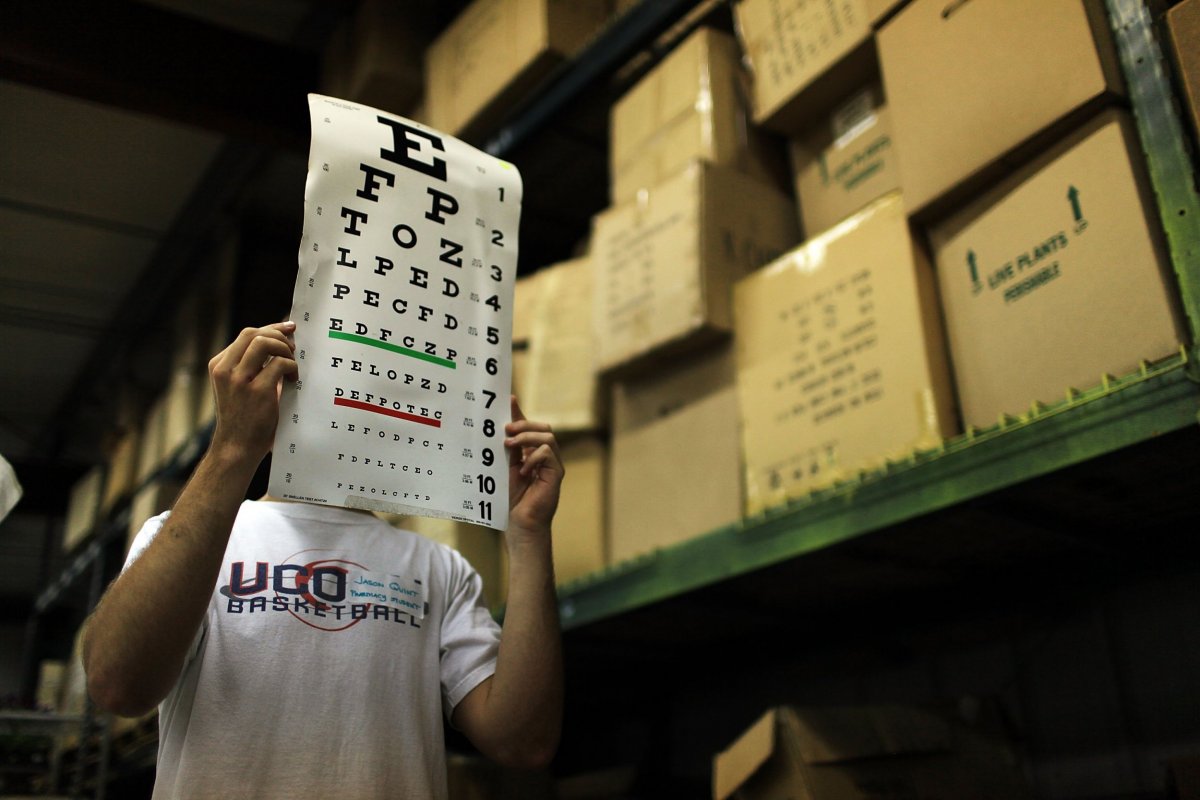
Updated | A potential new treatment for a degenerative eye condition is showing promise. Results from a very small clinical trial of a stem cell-based therapy for macular degeneration was published Monday in Nature Biotechnology. After a patch of stem cells was inserted in two people's eyes, the number of letters each person could read correctly off an eye chart increased dramatically. Over the course of a year, each person could read far more letters than before the procedure; one read 29 more letters, while the other could read 21 more.
"After the surgery, my eyesight improved to the point where I can now read the newspaper and help my wife out with the gardening. It's brilliant what the team have done and I feel so lucky to have been given my sight back," one of the patients involved in the clinical trial, Douglas Waters, told The Guardian.
Waters and the other person involved in the study have a condition known as macular degeneration—one of the leading causes of vision loss in the United States, according to the American Macular Degeneration Foundation. There are two forms of macular degeneration—"wet" and "dry"—but the basic problem is the same. In the very advanced forms of the disease, cells in people's retinas die off. These cells, called retinal pigment epithelium (RPE) cells, are really important; if too many die, you can't see. And in the case of macular degeneration, you won't be able to see anything in the middle of your field of vision because the cells that are dying are smack in the middle of the retina.
To try and solve this problem, scientists from the London Project to Cure Blindness collaboration stuck a single layer of stem cells that have been encouraged to become these RPE cells on two people's retina—almost like a very fancy Band-Aid for the inside of the eye. They also ran tests with mice to make sure that the cells wouldn't grow tumors and with pigs to make sure they could actually do the surgery before trying it on human patients.
In general, phase one studies are intended to make sure the treatment is safe. To figure out whether it actually works well, more studies have to be done. And additional studies will also help clarify what the actual risks of the surgery are. Two pigs and one of the people in these experiments suffered retinal detachments, which can lead to someone losing their sight. While the study authors said they believed the human case wasn't related to the sugery, they also noted that "we cannot be certain" that the procedure didn't increase the risk of a detachment. "The true surgical risk can be assessed accurately only with a larger series of patients," they wrote

Testing a treatment on two people is no guarantee it will work for everyone. And both of these patients had the wet form of macular degeneration—for which there are already treatments, unlike the dry form. It's also not clear how expensive this procedure might be—or even who is developing it now. Pfizer was the "sole funding source" for this trial. However, the company announced in August 2017 that it wouldn't pursue the project anymore, FierceBiotech reported.
Still, researchers told The Guardian that the treatment could be on the market in five years.
This article has been updated to add additional information about the potential risks of the procedure and to clarify Pfizer's role.
Uncommon Knowledge
Newsweek is committed to challenging conventional wisdom and finding connections in the search for common ground.
Newsweek is committed to challenging conventional wisdom and finding connections in the search for common ground.
About the writer
Kate Sheridan is a science writer. She's previously written for STAT, Hakai Magazine, the Montreal Gazette, and other digital and ... Read more
To read how Newsweek uses AI as a newsroom tool, Click here.








